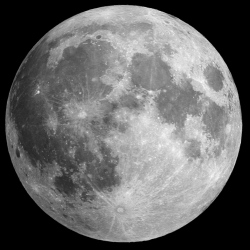
To date, all human economic activity has depended on the material and energy resources of a single planet; understandably, perhaps. It is conceivable though that future advances in space exploration could change this by opening our closed planetary economy to essentially unlimited external resources of energy and raw materials.
Look up at the Moon this evening, and you might be gazing at a solution. The Earth’s closest celestial neighbour seems likely to play a major role and already a number of private companies have been created to explore the possibilities.
It is important to stress that even now, 40 years after the Apollo missions, we still don’t have a complete picture of the Moon’s economic potential, and obtaining one will require a more rigorous programme of lunar exploration than has been undertaken to-date. In part, this is why proposed future lunar exploration missions (such as the recently announced Lunar Mission One) are so important.
Nevertheless, as a result of work over the past four decades, we do now know enough to make a first-order assessment of lunar resource potential. In doing so it is useful to distinguish between three possible future applications of such resources.
Digging deep
We have the option of using lunar materials to facilitate continued exploration, and future economic development, of the Moon itself. The concept is usually referred to as In Situ Resource Utilisation, or ISRU.
We could make use of lunar resources to facilitate scientific and economic activity in the vicinity of both Earth and Moon (so-called cis-lunar space) as well as future exploration deeper into the Solar System
We can consider the importation of lunar resources to the Earth’s surface where they would contribute directly to the global economy.
